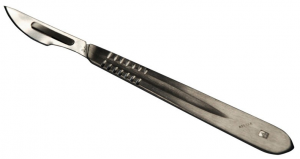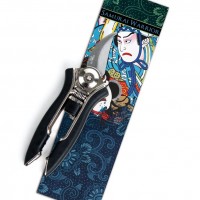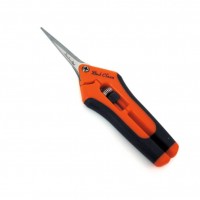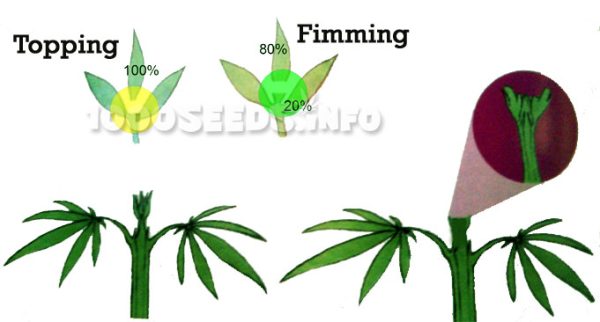How do I prune cannabis plants correctly?
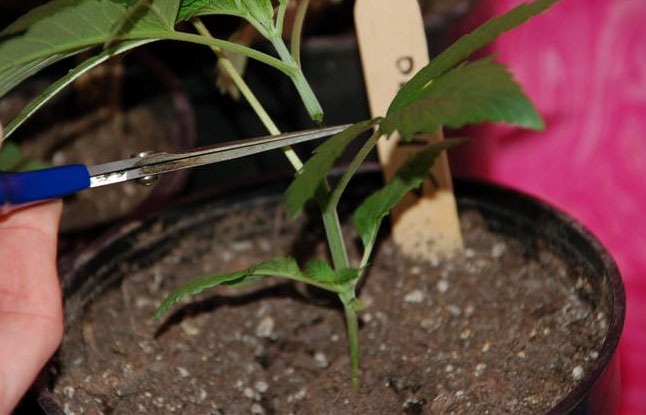
There are almost as many theories on how best to prune cannabis plants as there are different strains. Proper pruning can and should channel the plant's energy into the largest resinous buds and influence the growth structure in a certain positive direction. The most important thing here is to follow a precise plan and not just aimlessly chop away at the plant. It is not necessary to prune cannabis plants in order for them to grow well, but for some strains, cultivation methods, to limit the height and to increase the yield, it can make sense.
Wilted, more damaged and diseased leaves should be removed with a clean cut and are only breeding grounds for diseases and vermin.
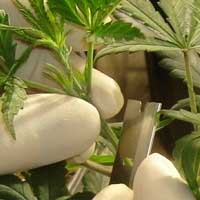 There is Cannabis strains that do not respond well to pruning as a training method or can't tolerate it at all, it's impossible to make a general statement. The best thing to do is to refer to the information on the varieties, ask experienced growers who already know different varieties or simply try it out yourself. Be warned not to remove the large awnings. These are the nutrient store for the plant and contribute an important part to its nutrition and development. If you simply cut them off uncontrollably and especially too early, the plant will be significantly weakened and will react annoyingly in various ways. With sativas and automatics, i.e. auto-flowering cannabis varieties, you should definitely keep your hands off. However, it can make sense with Indicas and Kush varieties with huge leaves towards the end of the flowering period. Leave or remove awnings and leaves?
There is Cannabis strains that do not respond well to pruning as a training method or can't tolerate it at all, it's impossible to make a general statement. The best thing to do is to refer to the information on the varieties, ask experienced growers who already know different varieties or simply try it out yourself. Be warned not to remove the large awnings. These are the nutrient store for the plant and contribute an important part to its nutrition and development. If you simply cut them off uncontrollably and especially too early, the plant will be significantly weakened and will react annoyingly in various ways. With sativas and automatics, i.e. auto-flowering cannabis varieties, you should definitely keep your hands off. However, it can make sense with Indicas and Kush varieties with huge leaves towards the end of the flowering period. Leave or remove awnings and leaves?
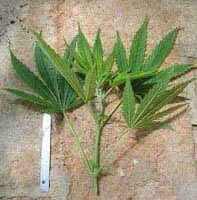 Before trying out pruning and gaining your own experience, you should first decide on a cultivation method. This will determine when, how and if a cannabis plant is pruned. Not all pruning techniques are suitable for all methods of cultivation. This means that with sea-of-green cultivation, for example, you have to follow a completely different approach than, for example, with "Lollipopping", Super Cropping or Growing Monster Plants outdoors. Proper pruning of cannabis plants is an art in itself and requires some time, practice and careful planning.
Before trying out pruning and gaining your own experience, you should first decide on a cultivation method. This will determine when, how and if a cannabis plant is pruned. Not all pruning techniques are suitable for all methods of cultivation. This means that with sea-of-green cultivation, for example, you have to follow a completely different approach than, for example, with "Lollipopping", Super Cropping or Growing Monster Plants outdoors. Proper pruning of cannabis plants is an art in itself and requires some time, practice and careful planning.
Pruning can be roughly reduced to two ways:
a) pruning to restrict side branches and growth and
b) Pruning to stimulate and promote side branch growth.
Cannabis plants with strong height growth: pruning to limit growth
Indoors, plants that are too tall waste energy getting all the nutrients and water to the side shoots and tips, which are a greater distance from the roots. The biggest buds always grow at the ends of the branches. It should therefore be as easy as possible for the plant to deliver nutrients to these buds. Much less light reaches the lower buds, they only become small and airier. This means that the small leaves and flowers at the bottom of the plant only waste space and take energy away from the big buds higher up.
You can plan ahead and influence various factors to prevent cannabis plants from reaching too exorbitant a size:
- An important point here is Sufficient light. If, for example, you were to put an indoor sativa in an air-conditioned room and hang a lot of fluorescent tubes high up on the ceiling, in the best case you would get long, giraffe-like, curly, very very long and bright yellow plants that try to reach the light right up there on the ceiling. This means that sufficiently strong lighting, even in the growth phase, can help prevent overly tall and elongated growth.
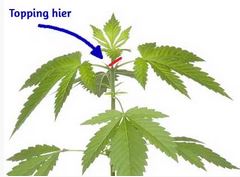
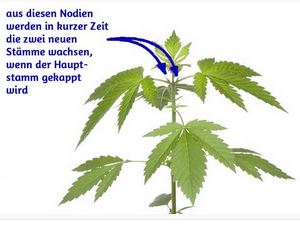
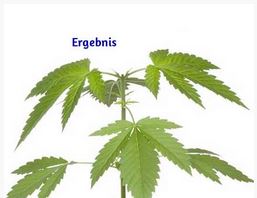
- With the help of topping , i.e. pruning the main shoot by cutting off the very top small tip, the height growth can also be limited. The cannabis plant then puts its energy into producing two shoots instead of one. If this is repeated further up after some time, the two shoot tips will each produce another 2, making a total of 4 shoot tips. If you do this a second time, you will end up with 8 shoots. How often this is repeated and whether it is repeated depends on the shape you want the plant to have in the end, i.e. also on the cultivation method. Topping reduces the height of the plant and limits vertical growth. Topping should only be done when the plant is already a few weeks old, has already formed many roots and is at least 10-15 cm high. It can also be done when the plant is already taller, in which case it will "divide" into two or more main stems further up. It is also important to do the topping at least one week, or better still 2 weeks, before the changeover to flowering. This gives the plant enough time to recover from the stress and form new side branches. If you cut off a larger part of the main shoot of an already taller plant, you can easily make a very good and strong head cutting out of it and thus have another plant. Proceed in the same way as described for Making cuttings yourself described.

Plants that have not been topped, i.e. that have not been cut off at the top, have a really thick headbud. However, with the very large headbuds and flowers, as beautiful as they are, there is also an increased risk that, especially towards the end of the flowering period, botrytis will suddenly appear. Botrytis occurs. The huge, very compact buds contain moisture that cannot be removed by the air in time, so there is a risk of mould forming. If the headbud is "spread", i.e. if several shoot tips are topped, the individual flowers in the uppermost part of the plant receive more light and the yield may increase.
Wuschel monster - Thinning out leaves and branches
Some cannabis plants grow extremely fuzzy and bushy. They use a lot of energy to grow and form a real labyrinth of side branches. Outdoors, these monster bushes can produce very large yields, but they are poorly suited for indoor use. Because the plant energy is distributed and subdivided in an infinite number of directions, very many, but only smaller flowers grow. The individual flowers get less light because of the extremely bushy growth, and the air flow between the leaves, branches and buds is less possible, so fungal diseases or pest infestations can occur more easily and then spread accordingly. If pest infestation occurs, it is correspondingly more difficult to combat due to the large amount of leaf material.
It is important to note that not every plant with a bushy growth habit is a fuzzy monster that must be pruned. However, for some varieties, cultivation methods and, above all, limited space, it can be advantageous to a reasonable extent.
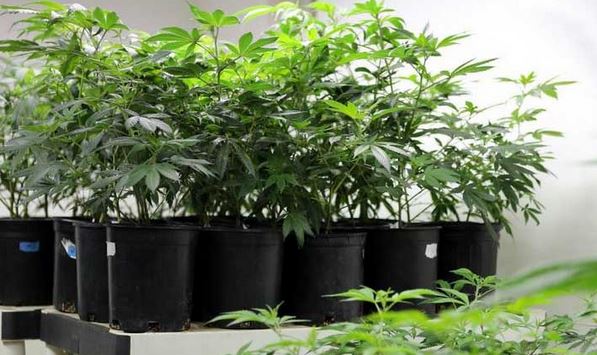
Thinning out when growth is too bushy
To prevent a fuzz monster and optimise the productivity of the plant, carefully choose which branches are suitable as producers of large flowers and which should be removed. The number of side branches that should grow out fully should correspond to the available growing space and the size and strength of the root system. In addition, if the growth is too bushy, it is usually a good idea to remove the excessive number of small leaves (but never all of them, approx. 1/3) so that more light reaches the flowers. Also cut off with a clean cut at the base.
Avoid excessive pruning
Excessive pruning causes stress to the plant and should therefore be avoided. You should always have a good reason for pruning a plant. Because of pruning, it has to expend energy to heal itself, which at the same time robs it of energy for other processes. Prune only what makes sense and only as much as is necessary.
Pruned branches and shoots are susceptible to being attacked by diseases, fungi or insects at the cut. It is recommended by some growers that tree sealant be applied to the cut surfaces. However, scientific research has shown that this is mainly a cosmetic product that may slow down the healing process. You can use it, but it is not said that it really makes sense or is better. In any case, keep an eye on cuts and immediately if you suspect a fungal infection, cut the area away widely and apply fungicide.
The less stressful option for the plant with less risk of infestation is super-cropping, where branches are bent and the cells squashed but not cut. See more at: Super-cropping. Then the limp, cropped branch is left hanging for a few days so that the wound can heal first and then it is cut off. This takes a little longer, but is gentler on the plant.
Tool/material for trimming
- Scalpel
- Disinfectant for surfaces (for the scissors or scalpel)
- Gardener's shears






